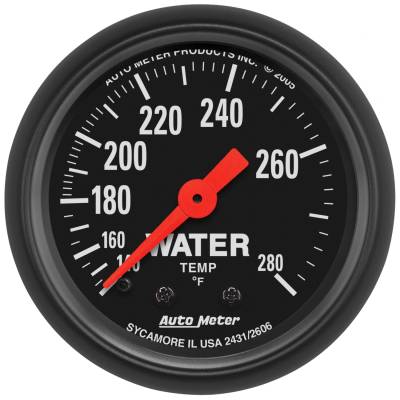


Normal coolant temperature will be around 195 to 220 Fahrenheit (approx 90C) and anything above or below this can start causing problems. If it ever goes into the red stop the car before you cause any serious damage to the engine. It won't harm the engine, per se, but it does hurt fuel mileage overall, which will hurt your pocketbook in the end. You should always keep an eye on the engine (coolant) temperature gauge to see if it starts to run too hot. If the temps are going down when travelling at speed, this means the thermostat is allowing too much coolant from the radiator into the engine and allowing the temps to decrease, which is actually not a good thing. If the engine temperature warning light illuminates on your dashboard, it means your car’s engine is overheating. Then you can observe your temperature gauge and see if the response has. When the bubbles stop, cap the radiator BEFORE you turn the vehicle off. Keep adding coolant mix to keep all radiator fins covered - just below the filler neck. If there are small bubbles bursting, it isnt bled yet. If the thermostat is behaving correctly, it will only allow as much warm coolant out of the engine going to the radiator and cooler coolant to come into the engine as needed to allow the engine to maintain a temperature. Observe the coolant in the neck of the radiator fill. Because excessive water temperature may be harmful to the engine and cause performance and reliability degradation. The water temperature gauge can help us monitor the temperature of the vehicle’s engine coolant. This means there's a greater cooling capacity (increased air = increased cooling ability). The purpose of the vehicle’s coolant system is to keep the engine at a constant temperature. When you're travelling down the road, there is a greater flow of air through the radiator. They are guaranteed to provide consistent performance for many years to come.It "sounds" as though from your explanation your thermostat is staying open partially when the engine is cooled to normal levels. Better still, they offer superior resistance to water, extreme cold and heat, and many other unfavorable conditions. Made using the latest advancements in technology and the highest grade materials, these gauges provide exceptional accuracy and functionality. Along with coolant temperature gauges, you can go for fuel temperature gauges, oil temperature gauges, and gauges for many other applications. On our virtual shelves, we’ve gathered an extensive collection of superior-quality temperature gauges from industry-leading manufacturers. These gauges use electrical current and a sending element to provide temperature readings. While earlier mechanical coolant temperature gauges were a popular option, nowadays almost all vehicles come with electrical temperature gauges. The coil, in its turn, unwinds with the help of alcohol that expands when the temperature rises. The temperature is shown when the coil pulls the linkage on the needle. Mechanical ones are operated with the Bourdon Tube, brass or copper tube filled with alcohol. The tip of the ECT sensor protrudes into one of the cooling system passages and is immersed in coolant. Temperature gauges are divided into two basic types: mechanical and electrical. A typical engine cooling temperature sensor is a Negative Temperature Coefficient (NTC) thermistor, which means its electrical resistance decreases when the temperature increases. Located in the dash of your ATV or UTV, coolant temperature gauges show how hot the engine is and allow you to stop your vehicle before the major damage occurs. Besides, it can be used as a warning sign for overheating or freezing of the water coolant mixture.
#Coolant temperature guage driver#
It shows how cold or hot the engine is running, helping avoid any serious damage being done.It also alerts the driver if there is an issue with the cooling system or electrical system. Extremely high engine temperatures can result in severe damage and costly vehicle repair. Here is a picture when the coolant temperature bar graph gauge was in the same position, however the coolant temperature was 30 cooler according to the Information Pages. The temperature gauge is a very important piece of equipment. This VDO quality, 52mm diameter, coolant temperature gauge accessory can be used alongside your existing. Although the cooling system of your powersports vehicle is designed to maintain fairly constant engine temperature, the actual temperature can vary a lot due to various reasons. Also requires fitting kit J13064 Range is 40-120C.


 0 kommentar(er)
0 kommentar(er)
